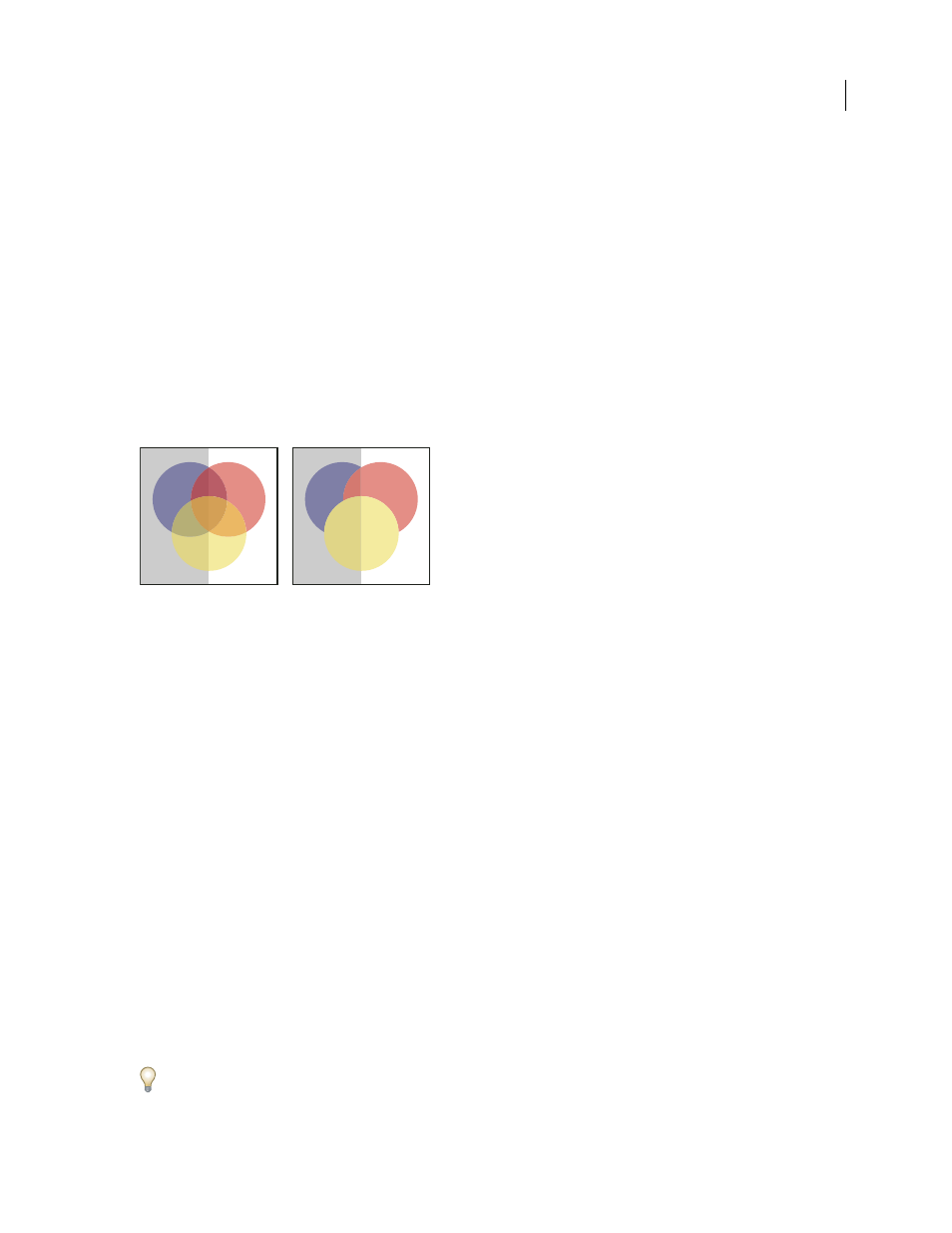Applying transparency to groups – Adobe InDesign CS3 User Manual
Page 407

INDESIGN CS3
User Guide
400
See also
“Synchronize color settings across Adobe applications” on page 441
“Applying transparency to groups” on page 400
Applying transparency to groups
Besides applying transparency effects to single objects, you can apply them to groups.
If you simply select objects and change their individual opacity settings, the selected objects’ opacity will change
relative to that of the others. Any overlapping areas will show an accumulated opacity.
In contrast, if you target a group that has been created with the Group command, and then change the opacity, the
group is treated as a single object by the Effects panel (the Effects panel shows only one level option—Group), and
the opacities within the group don’t change. In other words, objects within the group don’t interact with each other
in transparency.
Individual objects selected and set to 50% opacity (left) and group selected and set to 50% opacity (right)
Change the appearance of transparent artwork on-screen
Use the Display Performance dialog box to set transparency preferences. These preferences determine the on-screen
quality of transparent objects in new documents and in documents saved with modified preferences. You can also
set the preferences to turn on or off the display of transparency in the document. Turning off transparency in the
display preferences doesn’t turn off transparency when printing or exporting the file.
Note: Before you print a file containing transparency effects, make sure that you check the transparency preferences first.
Printing automatically flattens the artwork, and may affect the appearance of the transparency effects.
1
Choose Edit > Preferences > Display Performance (Windows) or Adobe InDesign > Preferences > Display Perfor-
mance (Mac OS).
2
Select an option (Fast, Typical, High Quality) in the Adjust View Settings section to determine the on-screen
resolution of any effect in the document. The settings you change apply only to the option you select here:
•
Fast turns off transparency and sets the resolution to 24 dpi.
•
Typical displays low-resolution effects and sets the resolution to 72 dpi.
•
High Quality improves the display of effects, especially in PDF and EPS files, and sets the resolution to 144 dpi.
3
Drag the Transparency slider. The default setting is Medium Quality, which displays drop shadows and feathering.
4
Click OK.
5
When inks overlap with blend modes, choose View > Overprint Preview. This option ensures that you can see on-
screen how any inks interact with transparency.
Use the View menu to quickly change transparency display between Fast Display, Typical Display, and High Quality
Display.
